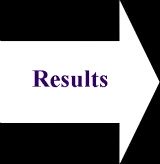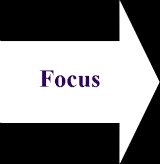Home Page | Blog | Managing | Marketing | Planning | Strategy | Sales | Service | Networking | Voice Marketing Inc.
Human Resource Planning is
Key to Your Business
Include an Employee Development Plan
for Each Employee
Human resource planning is a key activity in business. What is human resources (HR)? It includes workforce planning, employee development plans, building basic employee benefits and salary programs, training and development, hiring and firing of employees, and more.
Search This Site

HR planning is a key activity for business; as it is very likely that your business cannot operate without people.
Even a business with the owner as the only employee of the business needs human resources - planning and managing one employee (yourself) is just simpler (or perhaps harder).
Human resource management is an important staff function for business; because of that, the HR plan needs to be part of the overall business plan.
Building an employee development plan for each employee is part of the HR responsibility. What are the employee's strengths and weaknesses? What training is necessary to improve skills? What specific skills does the employee have? Can those skills be used in other areas of the business (cross-training is important in small businesses)?
Developing a development plan needs to include input from the individual(s) responsible for HR in your organization, along with the employee and the supervisor or manager.
Typically, HR also conducts salary and benefit surveys and builds basic employee benefits and salaries programs. And handles workforce planning and scheduling (usually through a workforce coordinator or scheduler).
If you are a one-person business, still consider human resource planning for the future: it is likely that as your business grows, your human resource needs will also grow.
Then, define your human resources vision and mission: it needs to be closely aligned (if not the same) to the organization's mission and vision statements. Next, identify the primary (top 5) goals of your plan (workforce planning should always be one of those goals due to the importance of having enough of the right people in the business).
Human Resource Planning Example:
Here is an example of HR planning of the Top 5 HR goals for one of my clients:
- Goal #1: Employees will have a safe and supportive workplace. Every business needs a safety plan.
Objective: Develop a safety checklist and operate the business to ensure all safety regulations are met. Reduce workplace injuries to Zero. Involve employees (through an internal committee or team) in making their environment a safe place to work. Support health and wellness programs through an optional, additional-cost, benefit program.
Strategy: The safe and supportive workplace goal will be supported by a company program to engage employees in individual health practices and improvements and ensure that their physical work space is appropriate and safe. Provide access to flexible work programs and work-from-home programs. Ensure the at-work environment is ergonomically best.
Measures of success: Reduction in injury; reduction in time-off requests; reduction in absenteeism related to on-the-job injury; getting employees back to work as quickly as possible - likely through a work accommodation program (e.g. light duties; half days, etc.); regular safety inspections; regular safety meetings with employees; regular ergonomic assessments.
- Goal #2: To be recognized as a preferred employer.
Objective:There are a number of programs across North America, and likely across the globe, that recognize the "Best Employer" in certain categories (by industry, by number of employees, etc.). Apply to these programs (as appropriate) and ensure that the business is structured as a Best Employer business.
Strategy: Recruiting employees will be easier with a 'brand identity' of being a 'best' or preferred employer. Job applicants will look for the "best" employers. Develop active recruitment policies that reach out to potential employees.
Measures of success: Ask new hires why they applied, where they heard about, or saw, the employment opportunity information. Assess the impact of Best Employer status internally by seeing if internal applicant referrals increase.
- Goal #3: To reduce employee turn-over and to increase employee retention.
Objective: Reduce employee turn-over by 35% in year one (this can be done by retaining good employees and by making better hiring decisions).
Strategy: Reduce employee turn-over and increase retention, through mentorship programs; through strong new employee orientation programs; recognition programs; through offering competitive employee compensation programs (within industry).
Measures of success: Orientation programs must be completed within first 30 days (measure); mentor feedback; performance evaluations completed on time and annually (and worded in a positive manner); exit interviews to discuss why the employee is leaving and then acting on that information; increase number of new positions filled from posting within the company. Do an annual survey of employees to assess how they feel about the organization - listen to employees and act on the key elements of what they have to say (if you don't act, tell them why).
- Goal #4: To be a learning organization.
Objective: Build a performance review program to include training and learning components; track employee development; develop in house training programs - train employees to be able to train others; ensure that good training is available to all employees.
This objective is particularly important in a business with a changing marketplace.
Strategy: To develop learning outcomes for internal training; develop a knowledge database that employees can easily access; develop budget for training.
Measures of success: Measure trained employees against the learning outcomes predicted (established); track the usage of the knowledge database (# of hits; number of pages reviewed, length of time online) - if one page is reviewed often maybe that subject needs some focused training for all employees; was the training budget spent?
- Goal # 5: Workforce planning
Objective: To forecast professional labor needs for the period. (In other businesses, this would be expanded to predict skilled and unskilled, full time and part time labor needs.) In a larger business, a workforce coordinator would handle the planning and scheduling of employees; in a smaller business, workforce coordination is handled by the owner or manager.
Strategy: To consider demographics in the workforce plan (older employees may be looking for reduced work hours or retirement; younger employees may be looking for quick progression and/or new learning opportunities); identify talent pools (people's capabilities and cross-capabilities); identify career paths for key employees (all employees if you have the time); identify best-fit recruiting solutions. Make sure that progression criteria and program is clearly communicated (perhaps in your employee handbook.)
Measures of success: Promote on basis of capability - now and in the future: how successful are the promotions; what is the turnover rate by department; are talent pools being utilized - if an individual can be used in several areas is he or she being deployed in several areas?; have career paths been discussed, planned and communicated with employees (and with their input); are all the positions filled; what is the open position number; how long does it take to fill a position?
Human Resource Planning
Good human resource planning and management will result in stronger rapport and communications between employees and the management. It will also result in individual employee development plans, low employee turn-over, low absenteeism, low safety incidents, competitive employee compensation programs (including basic employee benefits), high morale, good quality output and efficient operations, well trained employees, and satisfied customers.
Salary competitiveness (within the industry)and basic employee benefits need to be reviewed regularly, likely at least every two years. The plan needs to identify your hiring and promotion policies, and employee development plans for improving employee performance.
Human resource planning is a critical element
of your business plan.
Ensure that you spend time and effort to develop strong human resource planning that clearly identifies your present and future needs, policies, gaps, goals and actions.
More-For-Small-Business Newsletter:
For more timely and regular monthly information on managing your
small business,
please subscribe here.
Additional Reading:
Return from Human Resource Planning to Small Business Plan.
Find out more about the Role of Human Resources.
Use a simple business plan to get your business started; then develop a more complex strategy for the future.
Or return to More For Small Business Home Page.
Subscribe to
More Business Resources E-zine
Implement Your Plan: for Results

Once you've built your plan, you need to implement it.
Developing your strategy (in the plan) is the first, necessary, step. You need to know the direction you want to go, and you need the strategy and the plan to help you get there.
But once you've built the plan, you must execute it.
There is no value in building a plan that just gathers dust.
When building your business plan, make sure that you include an action plan for the strategies, techniques and tactics.
The actions need to include who's responsible for doing what; measurements for success (such as deadlines and timelines, targets and goals, costs, etc.); and why you need to take the action (in some cases, one action needs to be accomplished before subsequent ones can be launched).
As you work through the plan, make sure that you build reporting periods into the implementation: you need to know what's going on and why something is working, or not.
Make sure to communicate progress, or lack of it, throughout the organization. And re-visit the plan when and where necessary.
This Site
Focus on Your Plan

Plan for the future: lots of business owners want to get, or keep, moving forward. Planning seems to be more of a passive activity.
However, to ensure that your business goes in the right direction and that it optimizes all its opportunities, and manages its challenges, it is important to plan.
Balance your activities against the plan: make sure that you are investing your time, and money, on the elements of your business that will help you succeed.
Measure what works, and what doesn't work, and keep your focus: use your business plan as a map to guide you in the direction you want to go.







